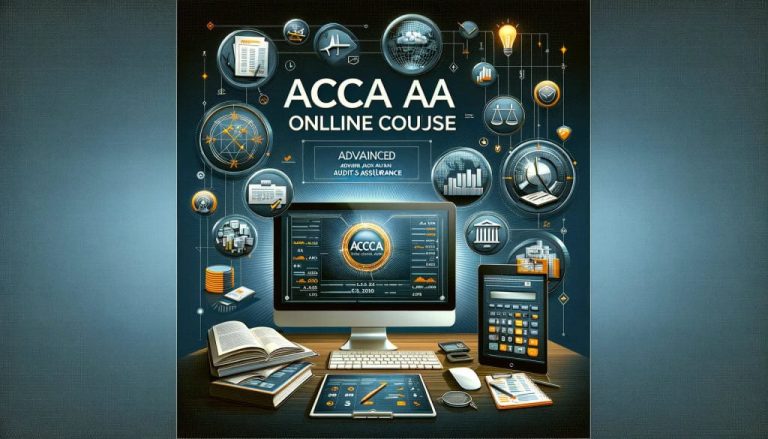The Vital Role of Digital Classrooms in Contemporary Educational Landscapes
As we observe the swift currents of change in education, an undeniable transformation is the decentralization of learning by building virtual classrooms. This movement has been gaining momentum, reaching a crescendo when the need for remote learning became a global imperative. In contemporary society, the pursuit of knowledge is not bound by the walls of a classic classroom.
Online learning platforms bring education into the living spaces of millions, connecting educators to learners across continents through the simple click of a button. This mode of education addresses the modern quest for balance between personal responsibilities and educational aspirations, offering a flexible pathway to achieving academic and career goals. The rise of this educational avenue has particular significance for adult learners, who must often juggle career pressures with their thirst for knowledge and skill enhancement. Innovative online EDD programs demonstrate the commitment to democratizing education, breaking the barriers of location and lifestyle, and creating conduits for personal and professional growth on a global scale.
Key Takeaways:
• Online education is reshaping the learning experience on a global scale, offering flexibility and access to a broader audience.
• The clear distinction between asynchronous and synchronous learning environments aids students in selecting the most suitable modality for their lifestyle and educational needs.
• The future of education hinges on the interplay between traditional learning and the evolving landscape of online education, where emerging technologies will play a pivotal role.
• Assessment of any online education program should not only focus on the curriculum but also consider its delivery, support systems, and accreditation.
Table of Contents:
1. Understanding the Rise of Online Learning
2. Navigating the World of Asynchronous and Synchronous Online Classes
3. Maximizing Engagement and Interaction in Online Courses
4. The Impact of Online Learning on Student Achievement
5. Overcoming the Challenges of Online Education
6. Online Learning and Professional Development
7. Evaluating the Effectiveness of Online Learning
8. Choosing the Right Online Education Program
Understanding the Rise of Online Learning
The ongoing digital revolution has profoundly influenced how we cultivate knowledge and skill sets. An empirical dive into the saga of online learning reveals a robust growth trend propelled by the confluence of technological strides and a global call to flexible educational solutions. The phenomenon transcends mere convenience, expanding the horizons of lifelong learning and bringing the concept of a global classroom to life. The genesis of this shift finds its roots in the recognition of diverse educational needs and a burgeoning appetite for higher education amongst working adults and remote learners alike.
Such challenges only catalyzed the momentum towards online platforms, ensuring academic continuity against the specter of unprecedented interruptions. Surging ahead, the digital pathway empowered by online learning has escalated not just as a stopgap but as a full-fledged alternative to traditional educational models.
Navigating the World of Asynchronous and Synchronous Online Classes
Two pillars underpinning virtual learning are asynchronous and synchronous modalities. The asynchronous format is the stalwart of flexibility, uncoupling the binds of time and space, granting the learner the autonomy to access and digest course materials at their own pace. This learner-centric approach fosters self-discipline and facilitates incorporating education into varied lifestyle rhythms, ensuring that higher learning is not a privilege limited to a schedule-bound few but a universal opportunity.
Conversely, synchronous learning endeavors to replicate real-time, interactive sessions akin to traditional in-person courses, fostering an engaging ecosystem where discourse and dialogue flourish.
Maximizing Engagement and Interaction in Online Courses
Engagement and interaction are lifeblood components for the success of any educational endeavor, more so within the ungirded realms of virtual classrooms. Developing a pulsating sense of community in an online course hinges on the strategic infusion of interactive elements. Utilizing multimedia resources, integrating group-based projects, and facilitating real-time discussions not only enliven the learning experience but also emulate aspects intrinsic to traditional learning environments.
The careful curation of content, paired with mechanisms that endorse collaboration and peer interaction, fosters a robust educational community, bridging the virtual gap learners face. Techniques such as peer reviews, live Q&A sessions, and virtual break-out rooms imbue an active learning atmosphere that prompts learners to engage more deeply with content and counterparts, thus enriching the collective learning experience.
The Impact of Online Learning on Student Achievement
A probing inquiry into the impact of online education on student success unveils a tapestry interwoven with multifarious findings. Structured, high-caliber online courses have demonstrated their prowess in transcending geographical barriers, conferring outcomes that can stand shoulder-to-shoulder with their brick-and-mortar analogs.
Scholarly discourse, buttressed by peer-reviewed studies, casts a favorable light on the achievements wrought by learners within the framework of digital classrooms. The harmonious blend of thoughtful course design, the integration of varied instructional mediums, and the judicious application of assessments cumulatively forge a conducive atmosphere for student success.
Overcoming the Challenges of Online Education
The digital domain is not immune to tribulations; online education encounters its share of hurdles. Confronting the challenges inherent in a dispersed learning environment calls for a vigilant stance on issues such as bridging the digital divide, elevating digital literacy, and upholding academic standards.
Institutions must boldly face these challenges, deploying a gamut of remedies, including robust technical support systems, comprehensive digital literacy programs, and stringent measures to safeguard the integrity of online assessments. Such fortifications are destined to fortify the vibrant ecosystem of online learning, ensuring its viability and acceptance as a critical component of the educational mosaic.
Online Learning and Professional Development
The interplay between online education and professional advancement has unfurled many opportunities for lifelong learners. For the working professional, the digital classroom is a portal to knowledge acquisition, upskilling, and qualification enhancement without necessitating career hiatuses or compromising professional pursuits.
A myriad of specialized curricula are now at the fingertips of ambitious professionals, allowing for a tailored educational trajectory closely aligned with individual career objectives. This ease of access to quality education, coupled with the imperatives of a rapidly evolving job market, underscores the crucial role of continuously updated knowledge and skills in the landscape of career progression.
Evaluating the Effectiveness of Online Learning
Assessing the caliber of an online course extends well beyond the superficial review of the curriculum. It encompasses a multifaceted appraisal of the educational experience, considering the breadth and depth of content delivery, instructors’ proficiency, the technological platform’s robustness, and tangible student learning outcomes.
Institutions that excel in online education are often marked by a systematic approach to evaluation, one that embraces feedback loops and is dedicated to constant refinement. Recognizing the importance of esteemed accreditation and compliance with established academic standards solidifies the value of online courses, rendering them a cherished asset in an individual’s academic and professional odyssey.
Choosing the Right Online Education Program
Embarking upon the journey of online education necessitates astute discernment. Prospective students are urged to consider various factors while evaluating online programs, including curriculum relevance, delivery quality, faculty expertise, flexibility, and financial investment. Researching institutions, parsing program offerings, and validating accreditation lie at the heart of an informed decision-making process.
Undertaking this rigorous selection facilitates the alignment of educational aspirations with career trajectories, ensuring that the chosen program is not just a stepping stone but a gateway to enduring success and self-fulfillment.






